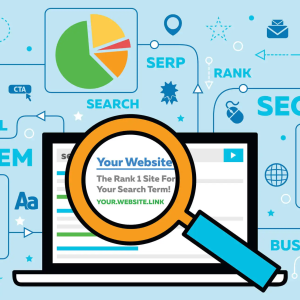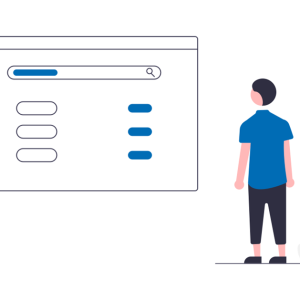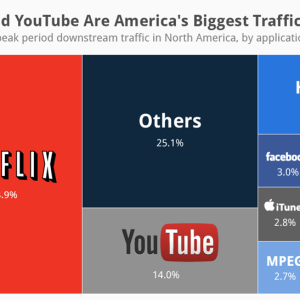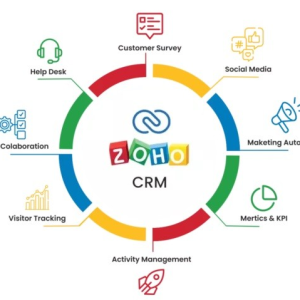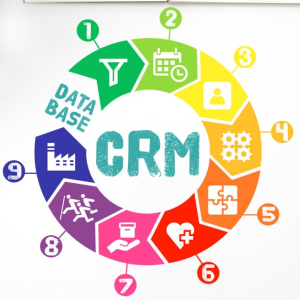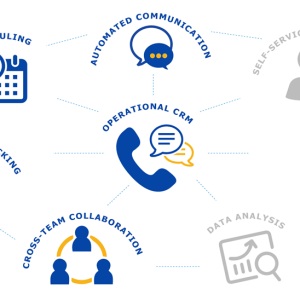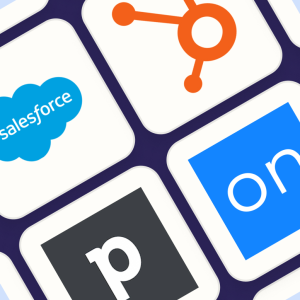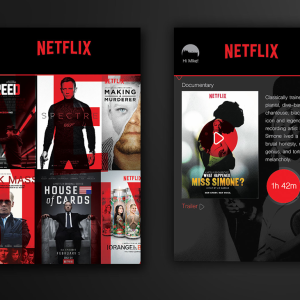But first, if you are reading this guide, make sure to check out the part1 of this guide in our “Best Beginners Guide To SEO Checklist 2022 – Part 1”
To find more about the SEO checklist for Link Building, On page SEO, Content, and Off page SEO practices, keep reading.
Introduction
The end of this decade will bring a lot of changes in SEO. The field is always changing, and it can be difficult to keep up with all the latest trends! However, if you want your website to rank well on SERPs then staying updated about what’s happening within our industry today would help us achieve that goal more easily than ever before. Now that you have learned about SEO basics, keyword research, and technical SEO checklist, let us continue where we left off.
Link Building SEO Checklist
#1 The Pareto Principle – Link Building
The Pareto Principle, also known as the 80/20 rule, can be applied to many areas of life. In business, it suggests that 80% of your results come from 20% of your efforts. When it comes to link building, this means that a small number of high-quality links will have a much greater impact on your SEO than a large number of low-quality links.

So, how can you build more high-quality links? There are a few ways:
- Reach out to bloggers and influencers in your industry and ask them to mention your website in their blog posts or social media updates.
- Submit guest posts to popular blogs in your industry. Make sure to include a link back to your website in your author bio.
- Partner with other businesses in your industry and promote each other’s products or services on your websites or social media channels.
- Create helpful resources, like infographics or eBooks, and share them on social media or other websites. Be sure to include a link back to your website so people can find more information about what you do.
#2 Optimize Your Anchor Text
Anchor text is the clickable text in a hyperlink. It tells users and search engines what the linked-to page is about.
If you’re building links to your website, you want to make sure that your anchor text is optimized for your target keywords. For example, if you’re trying to rank for the keyword “SEO tips,” you would want to use that exact phrase as your anchor text rather than something like “Click here” or “Read more.”
Here are a few more tips for optimizing your anchor text:
- Use keyword-rich anchor text. This will help your website rank for those keywords.
- Don’t stuff your anchor text with too many keywords. This will come across as spammy and could get you penalized by Google.
- Vary your anchor text. Using the same anchor text all the time isn’t natural. Try to mix things up with some branded anchor text, generic anchor text, and even naked URLs (just the URL itself without any anchor text).
- Use relevant keywords. Make sure the keywords you’re targeting with your anchor text are relevant to the page you’re linking to. Otherwise, it could come across as deceptive to users and search engines.
#3 Get Links from High-Quality Websites
One of the best ways to get high-quality links is to target websites that are already linking to similar websites. For example, if you have a website about SEO, you would want to get links from other websites about SEO, marketing, or web design.
You can find websites that link to similar websites using Google’s Search Console. Just go to Links > More > Your most linked content. This will show you the pages on your website that have the most links from other websites.
Once you have a list of potential link prospects, reach out to them and ask if they would be interested in linking to your website. Be sure to send them a link to your website so they can see what you’re all about before they agree to link.
Building high-quality links is a time-consuming process, but it’s worth it if you want to improve your SEO. These links will not only help your website rank better in search engines, but they’ll also drive targeted traffic to your website.
#4 Monitor Your Link Profile
It’s important to keep track of the links pointing to your website so you can make sure they’re high quality and relevant. You can do this using Google Search Console. Just go to Links > More > Your links.
This will show you all the websites that are linking to your website, as well as the anchor text they’re using. You can use this information to improve your link-building efforts and make sure you’re getting links from high-quality websites.
If you see any low-quality or spammy links pointing to your website, you can use Google’s disavow tool to tell Google to ignore those links. This is an important step in protecting your website from Google penalties.
#5 Use broken link building
Remember when we talked about fixing broken links? Hypocrite, you would have thought, if you have followed the blog thoroughly. But do not worry, we are not here to get you penalized, we promise.
Broken link building is a bit different. In this case, you are looking for websites that have links that go nowhere. The idea here is to reach out to the website owner and let them know about the broken link. Then, you can suggest your website as a replacement resource.
This is a great way for broken link building because you are not only helping the website owner fix their broken link, but you’re also getting a high-quality link to your website. Everyone wins!
To find websites with broken links, you can use a tool like Screaming Frog. Just enter in the URL of the website you want to check and let the tool do its thing. Once it’s finished, it will give you a list of all the broken links on that website.
#6 Use resource page link building
Resource page link building is a bit different than your typical link building. In this case, you’re looking for websites that have resource pages where that list helpful websites and resources on a particular topic.
For example, if you have a website for SEO, you could look for resource pages about marketing, web design, or business. Then, you would reach out to the website owner and let them know about your resource. If they think it’s a good fit, they will add your link to their resource page.
This is a great way to get high-quality links because you’re only targeting websites that are relevant to your niche. Plus, you’re providing them with valuable content that their readers will appreciate.
To find websites that have resource pages, you can use Google’s search operator “inurl:resources.” Just enter that into Google and it will show you all the websites that have resource pages.
Once you have a list of potential link prospects, reach out to them and let them know about your resource. Be sure to send them a link to your resource so they can check it out before they agree to link.
Building links is an important part of SEO, but it’s not the only thing you need to focus on. You also need to make sure your website is optimized for search engines. This includes things like optimizing your title tags, meta descriptions, and header tags.
If you want to rank higher in search engines and get more traffic to your website, make sure you’re following all the latest SEO trends and best practices. By doing so, you’ll be well on your way to success.
On Page SEO Checklist
On page SEO checklist will help you to optimize your website for better search engine visibility. The SEO checklist below covers all the important on page SEO factors that you need to check and optimize on your website.
On Page SEO#1 Optimize your title tags, meta descriptions, and header tags
Your title tags are one of the most important on page SEO factors. The title tag is the text that appears in the search engine results pages (SERPs) when your website comes up.
Make sure your title tags are relevant to your page’s content and include your target keywords. Keep them under 60 characters so they don’t get cut off in the SERPs.
- Meta description
Your meta descriptions are the short descriptions that appear under your title tags in the SERPs. These are important because they give searchers an idea of what your page is about.
Make sure your meta descriptions are relevant to your page’s content and include your target keywords. Keep them under 155 characters so they don’t get cut off in the SERPs.
- Header tags
Your header tags are the HTML tags that are used to designate headings and subheadings on your web pages. They range from <h1> (the largest) to <h6> (the smallest).
Make sure your header tags are relevant to your page’s content and include your target keywords. Use them to break up your content and make it easy to read.
Your H1 tags, title tags, and meta descriptions are all important on page SEO factors. Make sure they’re all optimized for your target keywords.
On Page SEO#2 Optimize your website’s content
Your website’s content is one of the most important on page SEO factors. Make sure your content is relevant to your target keywords and provides value to your readers. Keep it fresh by regularly adding new and original content.
One way to keep your content fresh is to add a blog to your website. A blog is a great way to add new and original content on a regular basis. Plus, it allows you to rank for long-tail keywords that you may not be able to target with your existing content.
On Page SEO#3 Fix keyword poisoning
Keyword stuffing is the act of filling your website’s content with so many keywords that it becomes difficult to read. Not only does this irritate your readers, but it can also get you penalized by Google. If you’re keyword stuffing, stop it!
Instead, focus on using your target keywords in a way that sounds natural and makes sense. Use them in your title tags, meta descriptions, header tags, and throughout your content. Just don’t go overboard with them.
On Page SEO#4 Improve internal building
Your website’s internal linking structure is important for two reasons: it helps search engines crawl your site and it helps keep your readers engaged.
Make sure your website has clear and easy-to-follow navigation. Use descriptive anchor text for your links and link to relevant pages on your website.
Also, make sure your website has a sitemap. A sitemap is an XML file that lists all the pages on your website. It helps search engines crawl and index your website.
You can create a sitemap yourself or you can use a WordPress plugin like Yoast SEO to generate one for you.
On Page SEO#5 Link authorization
Use Google Authorship to claim your content and link it to your Google+ profile. By doing so, you’ll get your picture next to your articles in the SERPs. This can help increase your click-through rate (CTR), which is a good thing for your SEO.
To set up Authorship, create a Google+ profile and then add your website to your profile. Once you’ve done that, you’ll need to add a rel=author tag to your website’s code.
If you’re using WordPress, you can do this by installing the WordPress SEO plugin by Yoast. Once you’ve installed and activated the plugin, simply go to the Author tab and enter your Google+ profile URL.
On Page SEO#6 Keep updating website content
Make sure you’re regularly updating your website with new and original content. Google loves fresh content, so the more often you update your site, the better.
One easy way to do this is to add a blog to your website. That way, you can regularly publish new and original articles, which will not only help with your SEO but also keep your readers coming back for more.
On Page SEO#7 Audit and prune content
As your website grows, you’ll likely end up with a lot of outdated or simply bad content. When this happens, it’s important to do an audit and prune the content that isn’t helping your website.
An easy way to do this is to install the WordPress SEO plugin by Yoast. Once you’ve installed and activated the plugin, simply go to the SEO > Titles & Metas tab and select the “Noindex, follow” checkbox for any pages or posts that you want to remove from Google’s search results.
On Page SEO#8 Check out our previous blog on keyword research SEO checklist
To get a complete picture of all SEO checklist details for 2022, make sure to read our previous blog post on the keyword research SEO checklist. In it, we have covered everything from how to find the right keywords to target to how to use them throughout your website. This will help you with building a healthy keyword structure for your on page SEO practice.
Off page SEO Checklist
The importance of off page SEO cannot be overstated. While it often gets thought about as just link building, there’s more to this than you might realize–which we’ll cover below!
Here’s what you need to do for optimal off page SEO in 2022:
Off Page SEO#1 Link intersect analysis
Link intersect analysis is a process of finding websites that link to your competitors but not to you. Once you’ve found these websites, you can then contact the site owner and ask them to link to your website as well.
To do this, you’ll need to use a tool like Majestic or Ahrefs. Simply enter your competitor’s URL into the tool and then click on the “Backlinks” tab. This will show you all the websites that link to your competitor.
Now, you can either manually check to see if these websites link to you or you can use a tool like LinkMiner, which will do this for you automatically.
If a website does not link to you, simply contact the site owner and ask them if they would be willing to add a link to your website.
Off Page SEO#2 Monitor your backlink profile
It’s important to keep an eye on your backlink profile and make sure that all the links are high quality and relevant. A good way to do this is to use a tool like Majestic or Ahrefs.
Simply enter your URL into the tool and then click on the “Backlinks” tab. This will show you all the websites that link to your website. If you see any low-quality or irrelevant links, you can contact the site owner and ask them to remove the link.
Off Page SEO#3 Unlinked mentions are a wasted opportunity
Any time your website is mentioned online but there’s no link back to your site, that’s a wasted opportunity. To find these unlinked mentions, you can use a tool like Google Alerts.
Simply go to Google Alerts and set up an alert for your brand name. This will send you an email any time your brand is mentioned online. You can then follow up with the site owner and ask them to add a link to your website.
Off Page SEO#4 Google business profile for better ranking
Make sure you have a Google My Business profile and that all your information is up-to-date. This will help your website rank higher in local search results.
To set up your profile, simply go to the Google My Business website and click on “Add your business.” Then, follow the instructions to add your business information.
To know more about off-page practices, check out our “A Complete Guide to Search Engine Optimization(SEO)” and keep an eye out for more blogs in the future.
Content SEO checklist
If you want your content to do the best it can in the SERPs, then you need to make sure it’s optimized using the following SEO checklist:
Content SEO#1 Publish high-quality, well-researched content
This should be a no-brainer, but it’s still worth mentioning. If you want your website to rank higher in search results, you need to publish high-quality, well-researched content.
This means taking the time to thoroughly research your topic and make sure you’re providing accurate, up-to-date information. It also means making sure your content is well written and free of grammar and spelling errors.
If you’re not confident in your writing ability, you can always hire a professional writer to help you out.
Content SEO#2 Content length
In general, you should aim for your content to be at least 1,000 words. That said, there’s no need to force it if your content is shorter than that and still provides value.
The important thing is that your content is thorough and covers all the relevant information on the topic.
Content SEO#3 Credibility of sources
If you’re quoting or referencing any statistics or data in your content, you need to make sure the sources are credible. This means linking to reputable websites or publications.
Don’t just link to the first website you find. Take the time to do a bit of research and only link to well-respected sources.
Content SEO#4 Use Internal links
Internal links are links from one page on your website to another page on your website. They’re a valuable way to help search engines index your website and can also help improve your website’s SEO.
To add an internal link, simply highlight the text you want to link and then click on the “Insert/edit link” button. Then, enter the URL of the page you want to link to and click “Insert.”
Content SEO#5 CTA
Every piece of content you publish should have a call-to-action (CTA). A CTA is a statement or button that tells the reader what you want them to do next.
For example, your CTA could be something like “Click here to learn more about SEO” or “Sign up for our newsletter to get the latest SEO tips.”
Your CTA should be clear and concise. It should also be relevant to the content you just published.
If you want people to sign up for your newsletter, don’t put a CTA that says “Buy our product.” That’s not relevant and it’s not going to convert.
Content SEO#6 Using smart techniques like A/B testing
If you’re not sure which CTA works best, you can always run an A/B test. This is where you create two versions of your CTA and then see which one performs better.
To do this, simply create two different CTAs and then use a tool like Google Analytics to track the clicks. Whichever CTA has more clicks is the one you should use going forward.
A/B testing is a valuable way to optimize your website for conversions.
There are a million other ways to make your content readable and shareable – keeping in mind the relevance, coverage, logical flow, and other factors will help you in the long run.
To learn more about on page SEO practices, check out our “A Complete Guide to Search Engine Optimization (SEO)” and keep an eye out for more blogs in the future.
Conclusion
SEO is vital for any company with an online presence. While the algorithm may change, the basic principles will always remain the same. As long as you’re publishing high-quality content and following best practices, you’ll be in good shape. We hope the basic and advanced SEO checklist has helped you gather all the resources needed for your next big marketing campaign!
Don’t forget to sign up for our newsletter to get the latest SEO tips and tricks! And if you need help getting started with SEO, 12 channels subject matter experts are always here to help. We’re here to help you grow your business!
Good luck!

